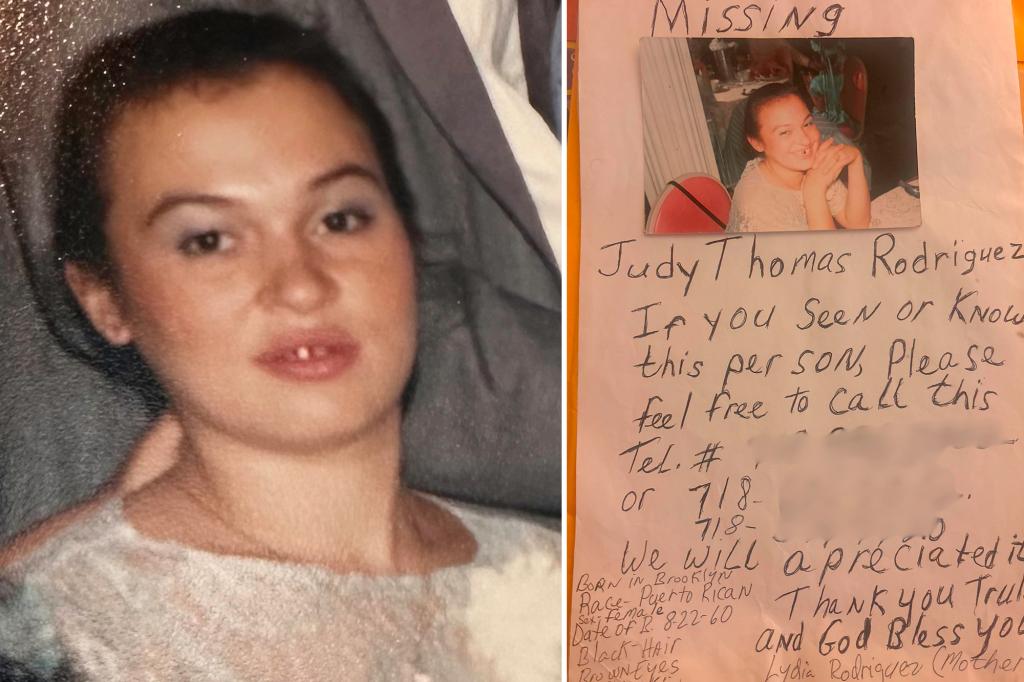The tragic tale of Judy Rodriguez, a 30-year-old mother who vanished shortly after her daughter’s first birthday in 1991, finally reached a heartbreaking yet resolute conclusion after more than three decades of uncertainty. Rodriguez’s disappearance, initially reported by her family in January 1991, remained a chilling mystery until advanced DNA technology unveiled the grim truth behind her fate. Her story, marked by a brutal murder and a decades-long quest for identification, highlights the power of scientific advancements in solving cold cases and providing closure to grieving families. It also underscores the importance of dedicated cold case units and the funding necessary to support their vital work.
Months after Rodriguez’s disappearance, in August 1991, an unidentified woman’s body was discovered in a desolate area where two parkways intersected in Queens. The victim, found beneath a wooden board with her ankles bound, bore the marks of a violent end. Despite the gruesome discovery, her identity remained a mystery, leaving her family without answers and her killers without full accountability for their heinous crime. The case eventually went cold, the victim’s name and story lost to time.
However, the pursuit of justice never truly ceased. In a remarkable turn of events, the Queens District Attorney’s Cold Case Unit, in collaboration with the NYPD, resurrected the investigation in November 2023. Enlisting the expertise of a private lab, they embarked on a quest to unlock the secrets held within the victim’s skeletal remains. This renewed effort, fueled by advances in DNA technology and genealogical research, proved to be the key to finally identifying Judy Rodriguez and bringing her story to light.
The breakthrough came in April 2024 when DNA Labs International, employing cutting-edge DNA analysis, generated a comprehensive genealogical profile from the victim’s remains. This profile, uploaded to public databases, provided the crucial link that connected the unidentified victim to Judy Rodriguez’s family. Detective Joseph Rodriguez of the NYPD’s Investigative Genealogy Squad meticulously constructed a family tree based on the DNA data, ultimately leading him to Rodriguez’s sister, Anna Salvadore. Salvadore’s daughter had previously submitted a DNA sample to a database, unknowingly paving the way for the identification of her long-lost aunt.
The subsequent confirmation of the DNA match through samples provided by Rodriguez’s daughter, Stephanie, brought a bittersweet end to the family’s agonizing wait. The confirmation, coinciding with the anniversary of Judy’s death, provided a sense of closure and a profound sense of connection to the mother she barely knew. While the news reaffirmed the tragic reality of their loss, it also offered the family the opportunity to finally lay Judy to rest and honor her memory with a proper memorial service. The identification not only provided closure for the family but also allowed for a more complete understanding of the crime and its impact.
The investigation into Judy Rodriguez’s murder, while initially resulting in convictions, lacked the crucial element of the victim’s identity. Four men were apprehended and charged shortly after the crime in 1991. Their sentences, ranging from manslaughter to hindering prosecution, reflected varying degrees of culpability in the horrific act. However, the lack of identification hampered a full understanding of the crime and its impact. The renewed investigation and subsequent identification of Judy Rodriguez brings a sense of completeness to the legal proceedings, even though the perpetrators have already served their sentences. The case serves as a testament to the enduring power of justice and the importance of pursuing answers, even decades after a crime has been committed. The case also underscores the significant role of advanced DNA technology and genealogical research in solving cold cases, offering hope for other families seeking closure and answers for their missing loved ones.










